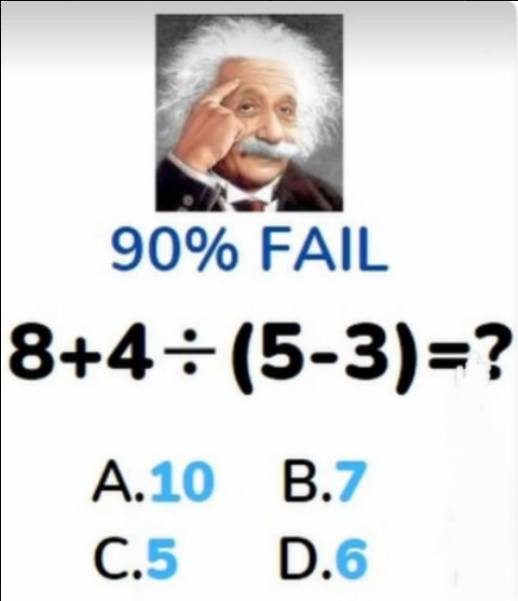Can You Solve This Equation? 90% of People Get It Wrong!

Math puzzles often challenge people to think outside the box, and this one is no different. A simple-looking equation has left many scratching their heads, with 90% of respondents getting the answer wrong. The equation in question is:
8 + 4 / (5 – 3) = ?
At first glance, it might seem straightforward, but getting the correct answer requires following basic math rules that some people tend to overlook.
Understanding the Order of Operations
To solve this equation correctly, you need to apply the order of operations, often remembered by the acronym PEMDAS (Parentheses, Exponents, Multiplication, Division, Addition, Subtraction). This set of rules ensures that everyone solves the equation in the same way, regardless of how it is written.
Let’s break it down step-by-step using PEMDAS.
Step 1: Handle the Parentheses
The first thing we notice in the equation is the parentheses. According to the order of operations, we need to solve whatever is inside the parentheses first. The equation inside the parentheses is:
(5 – 3)
When we subtract 3 from 5, we get 2. Now, the equation looks like this:
8 + 4 / 2 = ?
Step 2: Deal with Division
Next, we handle the division part of the equation. According to PEMDAS, multiplication and division come before addition and subtraction. In this case, we divide 4 by 2, which gives us 2. Now, the equation looks like this:
8 + 2 = ?
Step 3: Perform Addition
Now, all that’s left to do is the addition. When you add 8 and 2 together, you get 10.
So, the correct answer to the equation 8 + 4 / (5 – 3) = ? is 10.

Why Do So Many People Get It Wrong?
It’s easy to see why 90% of people fail to solve this correctly. Many individuals overlook the order of operations, especially when there are parentheses involved. They might mistakenly add 8 and 4 first before handling the division, which leads to an incorrect result.
A Simple Trick to Remember
Whenever you’re faced with a math problem like this, always remember PEMDAS. By following the correct order of operations, you can avoid common mistakes and get the right answer every time.
In Conclusion
This seemingly simple equation can trick even those who are good at math if they don’t apply the right rules. The key takeaway is that following the order of operations is crucial when solving equations. Next time you see a problem like this, remember to work through it step-by-step, and you’ll be in the 10% who get it right!





